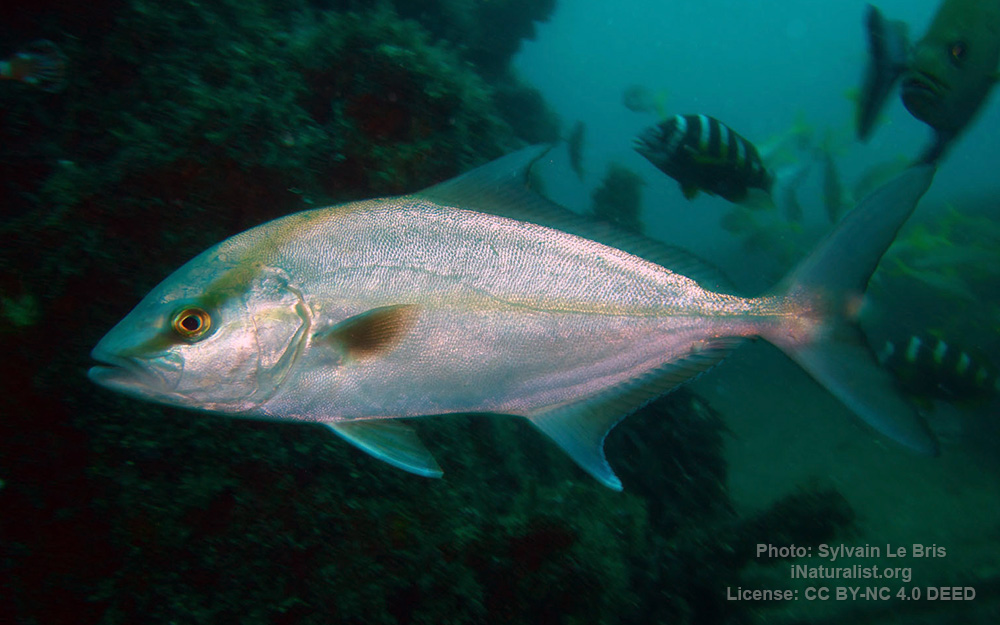Longfin yellowtail
(Seriola rivoliana)

Classification
General data
The longfin yellowtail has a less elongated, more flattened body than most jack species. Their dorsal fin and anal fins are elongated, and their outer edges have a definite sickle shape. The first rays of the almaco dorsal fin’s longest parts are nearly twice as long as the dorsal spines, also different from other jacks.
They reach a typical length of 90 centimetres (35 in), sometimes reaching 160 centimetres (63 in) and 60 kilograms (132 lb).
Typical catch is approximately ten pounds, however, according to the Florida Fish and Wildlife Conservation Commission, which describes it as wide-ranging in small groups and not a common catch.
Generally, longfin yellowtails are dusky-colored with faint amber or olive stripes down their sides. Their upper bodies and lower fins usually are dark brown or dark blue-green. The belly is much lighter and appears brassy or lavender. The nuchal bar and most of the fins are dark on adults. Exceptions are the pelvic fins which are white on the ventral sides.
The longfin yellowtail is a pelagic species, which are found in open-ocean zones in the vast deep waters beyond the continental shelf. This species may be found in small groups on slopes and off reefs at depths from 5 to 160 m. They visit wrecks more often than most other jacks do.
In the Indian to the west Pacific oceans, almaco jack live from Kenya to South Africa and have been spotted off Mariana Islands, Wake island, Ryukyu Islands, Kermadec Islands, and New Caledonia.
In the eastern Pacific, almaco jack live from California to Peru and the Galápagos Islands.
In the western Atlantic, they live mostly from Cape Cod to northern Argentina, although they are rare off North and South Carolina.
In the Northeast Atlantic it is known from the Azores, Madeira, and mainland Portugal, though it has also been reported in southern England and in the Gulf of Biscay.
Recorded first in 2000 in the Mediterranean Sea, near Lampedusa islands (Italy), more recent but sparse records are reported from the Balearic Islands to the Gulf of Gabès.
They typically swim at depths ranging from 5–35 metres (16–115 ft).










